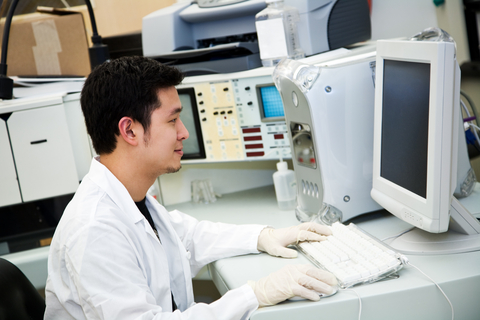Paralysed people use cutlery with robotic hand exoskeleton

Researchers at the University Hospital of Tübingen have helped six quadriplegic people to regain the ability to do everyday tasks like using cutlery or signing documents. The system required no surgery and is mobile enough to use outside a laboratory (New Scientist, 2016).
Surjo Soekadar, from the University Hospital of Tübingen, said “The patients were amazed by what they could do with the system. Previously, they couldn’t have a meal with a knife and fork, so changing that was amazing for them.”
The exoskeleton is controlled by a brain-machine interface worn on the head. This cap measures brain activity to understand how a user wants to move their hand. A robotic exoskeleton that wraps around the arm and hand converts this into mechanical movement. The people trying out the system took eight to ten minutes to get accustomed to it before being able to make movements such as writing their signature.
To make their system more reliable, Surjo Soekadar and his colleagues decided to use the eyes as well as the brain to control the exoskeleton. He said “Normally, systems like this have around 90 per cent accuracy. That might sound good, but in principle it means that, one time out of ten, a patient could drop a cup of coffee on themselves.” Participants were taught a simple eye movement that could be detected by a sensor in the cap. When they wanted the robot hand to let go of something, they moved their eyes to the side. This acts as a safety mechanism to stop the robot hand dropping something if it misinterprets the brain signals.
Surgically implanted brain-machine interfaces have had similar successes, but implanting them can cause bleeding or infection. David Guiraud at the University of Montpellier said by using a non-invasive approach,“there is almost no risk and a clear benefit.” He said one downside was that the exoskeleton and cap had to be fitted by someone other than the users, which might lead to the patient abandoning the system.
The trial was the first time people with paralysis have used the exoskeleton system. Surjo Soekadar eventually wants to make the system smarter by giving it an awareness of its surroundings. He said “In the next couple of years, systems like this will become commercially available. But it will take a few more years before they can become really smart.” A smartphone app could gather information such as whether the user is in a restaurant or at home and feed it into the system, giving it clues about the sorts of tasks it will be expected to perform.








